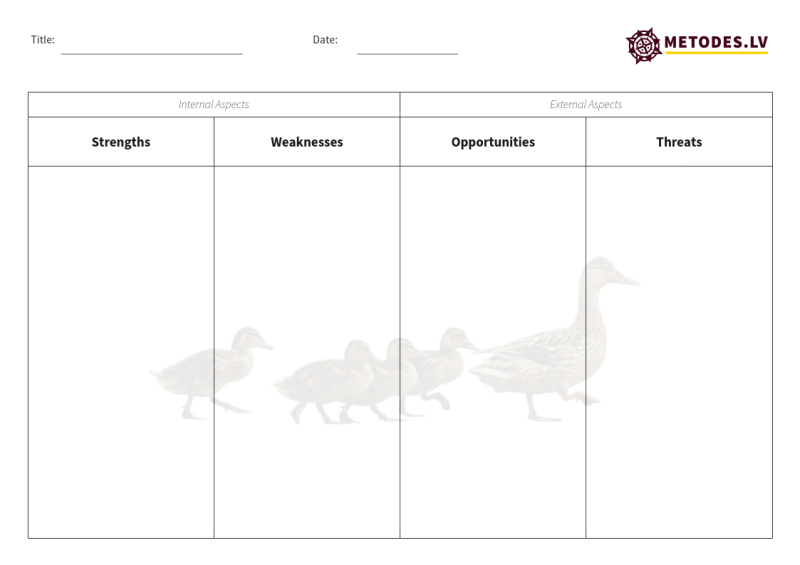SWOT analysis is a widely used tool to analyse an organisation’s or product’s strengths and weaknesses, as well as looking at outside opportunities and threats.
–
45 – 90 min.
SWOT analysis template
Outline
- Clearly define the subject to be analysed.
- Create a table with four sections: Strengths, Weaknesses, Opportunities, and Threats.
- Each group member individually fills in the table.
- The group creates a common table summarising the individual considerations.
Internal aspects
Strengths
Weaknesses
External aspects
Opportunities
Threats
Comments
Observing the following principles will increase the tool’s effectiveness:
- When considering opportunities and threats people tend to think about future implications and developments that arise from the identified strengths and weaknesses. But as stated in “Problem solving in three steps”, the problem solving process will be more effective when clearly separating stages for analysing the problem, looking for idea, and evaluating the ideas. Therefore the SWOT analysis should focus on the current situation – strengths and weaknesses addressing internal aspects, and opportunities and threats addressing external aspects.
- A SWOT analysis should provide a concise overview of the current situation.Therefore not more than 3 – 5 items should be included in each section. The process can however be divided in two steps: First write down everything that comes to your mind, and then shortlist the most important aspects.
- If you want to gain a deeper insight you can assess different aspects of the organisation or product separately. for example, employees, management, partners, products, working environment.
Template


